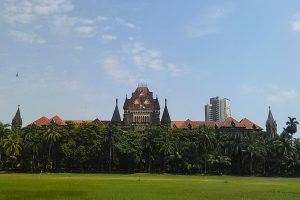Bombay High Court: The Division Bench of Prasanna B. Varale and S.M. Modak, JJ., while addressing the present matter expressed that:
“…relationship in between brother and sister, relationship in between mother and son, relationship in between father and daughter and so on were considered as sacrosanct. However, due to passage of time, these relationships have no more remained sacrosanct and there are various instances of overstepping the sacrosanct relationship by the near relationship.”
In the instant matter, appellant sexually abused his own daughter/victim. There are two views that is:
Whether the victim was a real daughter or a step-daughter. But the fact remains that she is victim.
Trial Court had convicted the appellant for the offence of Section 376 (2)(i), 506 IPC and under Section 4 of POCSO. A further separate sentence was imposed for the offence under Section of the said Act. Appellant had also obtained nude photographs of the victim on his mobile handset, trial court convicted him for the offence punishable under Section 67-B of the Information Technology Act 2000. Adding to this, the trial court acquitted the appellant for the offence punishable under Section 323 IPC.
In the present appeal, trial court’s judgment is challenged by the appellant.
Analysis, Law and Decision
Bench noted that the present matter was based on direct and corroborative evidence.
High Court considered the following:
Even though morally and legally Bench cannot think of a situation wherein the father has raped his minor daughter, but it is correct that Court is bound by rules of law. Even though such instances involving such a relationship are on rise, can Court take into account the evidence which is not admissible (as per existing provisions of law and on its interpretation) and convict the wrongdoer just for the purpose of sending a message in the society?
Bench stated that unfortunately, it cannot take such a view by bypassing the provisions of law.
Corroboration
Evidence given by way of corroboration cannot be said to be substantive evidence.
While elaborating on the concept of corroboration, High Court in light of the present context stated that when the trial court opined that the Section 164 statement can be utilized by way of corroboration, this Court fails to understand what the trial Court mean to say corroboration of which fact?
Trial Court failed to consider the difference and infact considered the Section 164 statement as substantive evidence itself. High Court stated that it is not permissible and hence the said observation was set aside.
Bench noted that there were image files of victim girls and video clips were pornographic. But there is a need to understand what is its evidentiary value, whether it is substantive evidence or whether it is a corroborative piece of evidence?
High Court for the above answered that the person who had seen the incident recorded or who is victim of events recorded can be the proper person and his evidence is substantive evidence. What is recorded and stored in the memory card when it is produced becomes corroborative piece of evidence.
Bench relied upon the following cases for the purpose of electronic evidence:
- Bhupesh v. State of Maharashtra, 2018 SCC Online Bom 1163
- Vanita Vasant Patil v. State of Maharashtra, 2018 SCC Online Bom 4105
Bench laid down the finding that electronic evidence also needs to be proved just like any other evidence.
Further, the Court stated that it is not inclined to accept the FSL report at least for the purpose of inferring that it is the accused only who has taken those images or done recording. At the most, it can only be said that in the articles referred to in FSL report some pornographic images were found.
Bench stated that it was cautious of the relationship between the victim and accused. It was difficult to opine what compelled the victim not to state those facts which she stated before the police.
Present set of facts and circumstances warrants that there are certain materials suggesting sexual intercourse but the hands of the Court are tied due to the provisions of law.
Statement of the victim recorded under section 164 of CrPC has not been given the status of examination-in-chief in all circumstances (except in case of disability as provided in clause (b) to sub-section 5A to Section 164 of Cr.P.C.).
Supreme Court’s decision in Shivanna expressed the desire to consider the statement under Section 164 CrPC as examination in chief, amendment to that effect is not brought to Court’s notice.
Hence, with all pains, High Court had no alternative than setting aside the conviction of the appellant for the offence punishable under Section 376(2)(i) of IPC and under Section 506 of IPC, though conviction under Section 67-B of the Information and Technology Act was maintained.
Lastly, while parting with the decision, High Court opined that the authorities concerned of the State or Central Government will take some initiative in incorporating certain amendment under relevant laws as to give status to Section 164 statement as that of the examination-in-chief in all eventualities.
We hope that legislatures will also consider the practical realities of the life which the victim has to face. The trauma which victim has to undergo, after the incident does not stop there and when it comes to facing real-life issues, there may be occasion for the victim to forego all the trauma which she had undergone and to take U turn.
[Imran Shabbir Gauri v. State of Maharashtra, 2021 SCC OnLine Bom 511, decided on 31-03-2021]
Advocates before the Court:
Mr Aniket Vagal for the Appellant (Legal Aid). Mrs M. M. Deshmukh, APP for the State.

